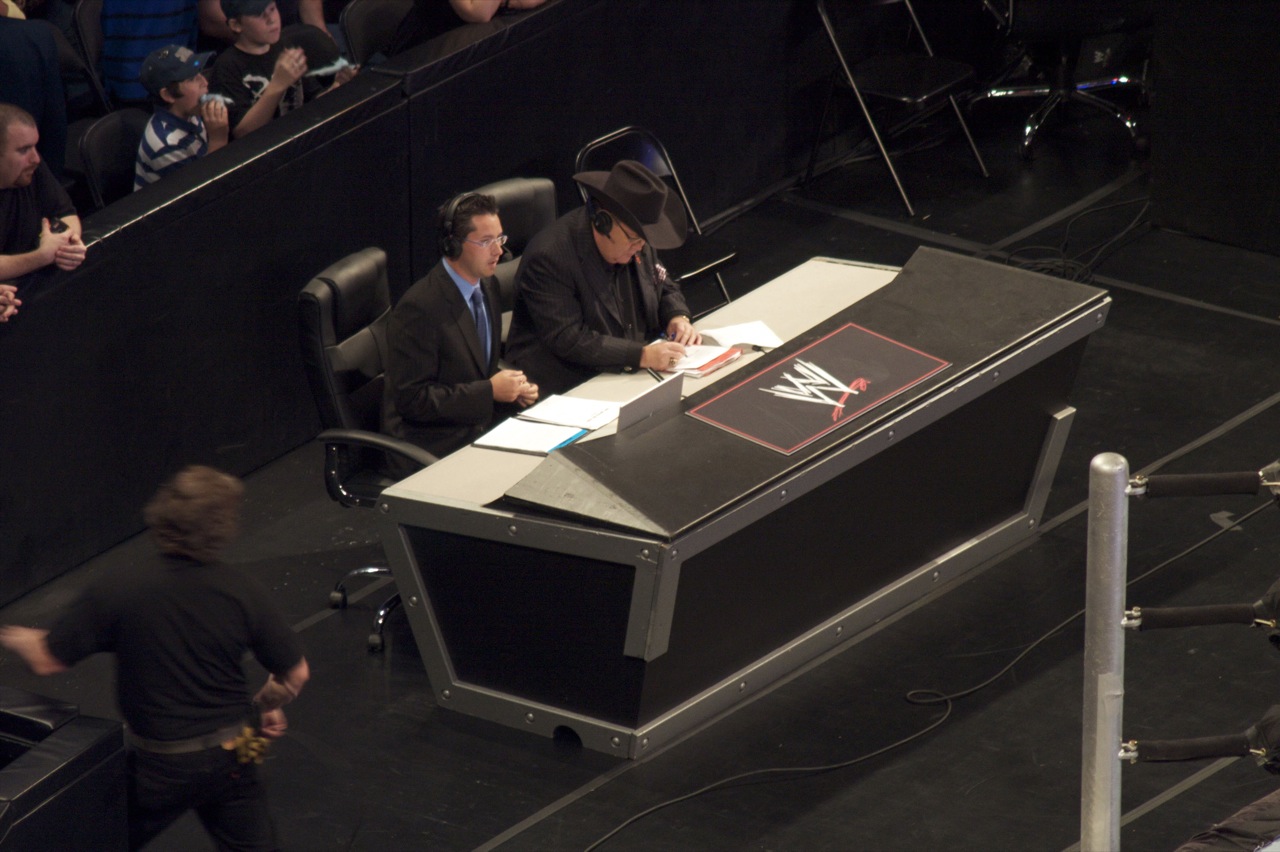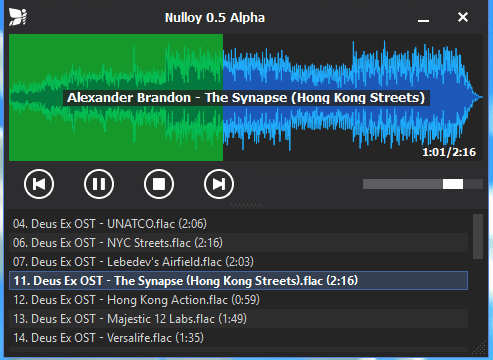|
William (Rosko) Mercer
William Roscoe Mercer (1927–2000), better known to millions of radio listeners simply as Rosko, was an American announcer, commercial voice over specialist and disc jockey (DJ). He is best known for his stints on New York's WOR-FM and WNEW-FM in the late 1960s and 1970s. He was often a rare African-American voice on radio stations that primarily broadcast to white audiences. His first job for a large media market radio station came in 1965, when he was a DJ on KBLA 1500 AM in Burbank, California. , ''''. April 17, 1965. p. 19. Retrieved May 14, 2019. Later, Rosko and other DJs of the time pioneered the |
Announcer
An announcer is a voice artist who relays information to the audience of a broadcast media programme or live event. Television and other media Some announcers work in television production, radio or filmmaking, usually providing narrations, news updates, station identification, or an introduction of a product in television commercials or a guest on a talk show. Music television announcers were also called video jockeys (VJ). Announcers are often voice actors who read prepared scripts, but in some cases, they have to ad-lib commentary on the air when presenting news, sports, weather, time, and television commercials. Occasionally, announcers are also involved in writing the screenplay or scripts when one is required. Sometimes announcers also interview guests and moderate panels or discussions. Some provide commentary for the audience during sporting events known as sports announcers, parades, and other events. Announcers perform a variety of tasks including presenting new ... [...More Info...] [...Related Items...] OR: [Wikipedia] [Google] [Baidu] |
Record World
''Record World'' magazine was one of the three main music industry trade magazines in the United States, along with '' Billboard'' and '' Cashbox''. It was founded in 1946 under the name ''Music Vendor'', but in 1964 it was changed to ''Record World'', under the ownership of Sid Parnes and Bob Austin. It ceased publication on April 10, 1982. Many music industry personalities, writers, and critics began their careers there in the early 1970s to 1980s. History Growth ''Record World'' has been considered the hipper, faster-moving music industry publication, in contrast to the stodgier ''Billboard'' and ''Cashbox'', its sister magazine. ''Music Vendor'', as it was then known, published its first music chart for the week ending October 4, 1954. A weekly, like its competitors, it was housed in New York City at 1700 Broadway, at 53rd Street, just across the street from the Ed Sullivan Theater, and West Coast editorial offices in Los Angeles on Sunset and Vine. Rock bands frequented '' ... [...More Info...] [...Related Items...] OR: [Wikipedia] [Google] [Baidu] |
1927 Births
Nineteen or 19 may refer to: * 19 (number), the natural number following 18 and preceding 20 * one of the years 19 BC, AD 19, 1919, 2019 Films * ''19'' (film), a 2001 Japanese film * ''Nineteen'' (film), a 1987 science fiction film Music * 19 (band), a Japanese pop music duo Albums * ''19'' (Adele album), 2008 * ''19'', a 2003 album by Alsou * ''19'', a 2006 album by Evan Yo * ''19'', a 2018 album by MHD * ''19'', one half of the double album ''63/19'' by Kool A.D. * ''Number Nineteen'', a 1971 album by American jazz pianist Mal Waldron * ''XIX'' (EP), a 2019 EP by 1the9 Songs * "19" (song), a 1985 song by British musician Paul Hardcastle. * "Nineteen", a song by Bad4Good from the 1992 album '' Refugee'' * "Nineteen", a song by Karma to Burn from the 2001 album ''Almost Heathen''. * "Nineteen" (song), a 2007 song by American singer Billy Ray Cyrus. * "Nineteen", a song by Tegan and Sara from the 2007 album '' The Con''. * "XIX" (song), a 2014 song by Slipk ... [...More Info...] [...Related Items...] OR: [Wikipedia] [Google] [Baidu] |
Disco Music
Disco is a genre of dance music and a subculture that emerged in the 1970s from the United States' urban nightlife scene. Its sound is typified by four-on-the-floor beats, syncopated basslines, string sections, brass and horns, electric piano, synthesizers, and electric rhythm guitars. Disco started as a mixture of music from venues popular with Italian Americans, Hispanic and Latino Americans and Black Americans "'Broadly speaking, the typical New York discothèque DJ is young (between 18 and 30) and Italian,' journalist Vince Lettie declared in 1975. ..Remarkably, almost all of the important early DJs were of Italian extraction .. Italian Americans have played a significant role in America's dance music culture .. While Italian Americans mostly from Brooklyn largely created disco from scratch .." in Philadelphia and New York City during the late 1960s and early 1970s. Disco can be seen as a reaction by the 1960s counterculture to both the dominance of rock music and the ... [...More Info...] [...Related Items...] OR: [Wikipedia] [Google] [Baidu] |
WINS-FM
WINS-FM (92.3 MHz) is a radio station licensed to New York, New York and owned by Audacy, Inc. WINS-FM simulcasts an all-news radio format branded as "1010 WINS on 92.3 FM"; with the call sign phonetically pronounced as "wins". The station's studios are located in the Hudson Square neighborhood in Manhattan and its transmitter is located at the Empire State Building. WINS-FM also broadcasts in HD Radio. Originally the FM adjunct to WMCA, this station has featured a series of contemporary music, rock, hot talk and alternative rock formats from 1975 to 2022. As the home of disco-formatted WKTU, this station overtook WABC as the top-rated hit music station in the late 1970s. Becoming " K-Rock" WXRK in 1985, Howard Stern was hired as morning host, with his talk show eventually becoming nationally syndicated via owner Infinity Broadcasting Corporation. WXRK's format varied between different iterations of rock, including classic and alternative rock, until Stern's highly publicized ... [...More Info...] [...Related Items...] OR: [Wikipedia] [Google] [Baidu] |
AM Radio
AM broadcasting is radio broadcasting using amplitude modulation (AM) transmissions. It was the first method developed for making audio radio transmissions, and is still used worldwide, primarily for medium wave (also known as "AM band") transmissions, but also on the longwave and shortwave radio bands. The earliest experimental AM transmissions began in the early 1900s. However, widespread AM broadcasting was not established until the 1920s, following the development of vacuum tube receivers and transmitters. AM radio remained the dominant method of broadcasting for the next 30 years, a period called the " Golden Age of Radio", until television broadcasting became widespread in the 1950s and received most of the programming previously carried by radio. Subsequently, AM radio's audiences have also greatly shrunk due to competition from FM (frequency modulation) radio, Digital Audio Broadcasting (DAB), satellite radio, HD (digital) radio, Internet radio, music streaming servi ... [...More Info...] [...Related Items...] OR: [Wikipedia] [Google] [Baidu] |
Top 40
In the music industry, the Top 40 is the current, 40 most-popular songs in a particular genre. It is the best-selling or most frequently broadcast popular music. Record charts have traditionally consisted of a total of 40 songs. "Top 40" or " contemporary hit radio" is also a radio format. Frequent variants of the Top 40 are the Top 10, Top 20, Top 30, Top 50, Top 75, Top 100 and Top 200. History According to producer Richard Fatherley, Todd Storz was the inventor of the format, at his radio station KOWH in Omaha, Nebraska. Storz invented the format in the early 1950s, using the number of times a record was played on jukeboxes to compose a weekly list for broadcast. The format was commercially successful, and Storz and his father Robert, under the name of the Storz Broadcasting Company, subsequently acquired other stations to use the new Top 40 format. In 1989, Todd Storz was inducted into the Nebraska Broadcasters Association Hall of Fame. The term "Top 40", describing a radio ... [...More Info...] [...Related Items...] OR: [Wikipedia] [Google] [Baidu] |
Playlist
A playlist is a list of video or audio files that can be played back on a media player either sequentially or in a shuffled order. In its most general form, an audio playlist is simply a list of songs, but sometimes a loop. The term has several specialized meanings in the realms of television broadcasting, radio broadcasting and personal computers. A playlist can also be a list of recorded titles on a digital video disk. On the Internet, a playlist can be a list of chapters in a movie serial; for example, Flash Gordon in the Planet Mongo is available on YouTube as a playlist of thirteen consecutive video chapters. Radio The term originally came about in the early days of top 40 radio formats when stations would devise (and, eventually, publish) a limited list of songs to be played. The term would go on to refer to the entire catalog of songs that a given radio station (of any format) would draw from. Additionally, the term was used to refer to an ordered list of songs played ... [...More Info...] [...Related Items...] OR: [Wikipedia] [Google] [Baidu] |
FM Radio
FM broadcasting is a method of radio broadcasting using frequency modulation (FM). Invented in 1933 by American engineer Edwin Armstrong, wide-band FM is used worldwide to provide high fidelity sound over broadcast radio. FM broadcasting is capable of higher fidelity—that is, more accurate reproduction of the original program sound—than other broadcasting technologies, such as AM broadcasting. It is also less susceptible to common forms of interference, reducing static and popping sounds often heard on AM. Therefore, FM is used for most broadcasts of music or general audio (in the audio spectrum). FM radio stations use the very high frequency range of radio frequencies. Broadcast bands Throughout the world, the FM broadcast band falls within the VHF part of the radio spectrum. Usually 87.5 to 108.0 MHz is used, or some portion thereof, with few exceptions: * In the former Soviet republics, and some former Eastern Bloc countries, the older 65.8–74 MHz band ... [...More Info...] [...Related Items...] OR: [Wikipedia] [Google] [Baidu] |
Radio Format
A radio format or programming format (not to be confused with broadcast programming) describes the overall content broadcast on a radio station. The radio format emerged mainly in the United States in the 1950s, at a time when Radio broadcasting, radio was compelled to develop new and exclusive ways to programming by competition with Television broadcasting, television. The formula has since spread as a reference for commercial radio programming worldwide. A radio format aims to reach a more or less specific audience according to a certain type of programming, which can be thematic or general, more informative or more musical, among other possibilities. Radio formats are often used as a marketing tool and are subject to frequent changes. Except for talk radio or sports radio formats, most programming formats are based on commercial music. However the term also includes the news, bulletins, DJ talk, jingles, commercials, competitions, traffic news, sports, weather and community an ... [...More Info...] [...Related Items...] OR: [Wikipedia] [Google] [Baidu] |
Progressive Rock (radio Format)
Progressive rock (sometimes known as underground rock) is a radio station programming format that emerged in the late 1960s,Thomas Staudter"On the Radio With a Mix Very Distinctly His Own" ''The New York Times'', March 24, 2002. Accessed March 23, 2008. in which disc jockeys are given wide latitude in what they may play, similar to the freeform format but with the proviso that some kind of rock music is almost always played.Fritz E. Froehlich, Allen S. Kent, Carolyn M. Hall (eds.), "FM Commercialization in the United States", ''The Froehlich/Kent Encyclopedia of Telecommunications'', CRC Press, 1991. . p. 179. It enjoyed the height of its popularity in the late 1960s and 1970s. The name for the format began being used circa 1968, when serious disc jockeys were playing "progressive 'music for the head and discussing social issues in between records.Mike Olszewski, ''Radio Daze: Stories from the Front in Cleveland's FM Air Wars'', Kent State University Press, 2003. . p. xi. Dur ... [...More Info...] [...Related Items...] OR: [Wikipedia] [Google] [Baidu] |
Billboard (magazine)
''Billboard'' (stylized as ''billboard'') is an American music and entertainment magazine published weekly by Penske Media Corporation. The magazine provides music charts, news, video, opinion, reviews, events, and style related to the music industry. Its music charts include the Hot 100, the 200, and the Global 200, tracking the most popular albums and songs in different genres of music. It also hosts events, owns a publishing firm, and operates several TV shows. ''Billboard'' was founded in 1894 by William Donaldson and James Hennegan as a trade publication for bill posters. Donaldson later acquired Hennegan's interest in 1900 for $500. In the early years of the 20th century, it covered the entertainment industry, such as circuses, fairs, and burlesque shows, and also created a mail service for travelling entertainers. ''Billboard'' began focusing more on the music industry as the jukebox, phonograph, and radio became commonplace. Many topics it covered were spun-off ... [...More Info...] [...Related Items...] OR: [Wikipedia] [Google] [Baidu] |





